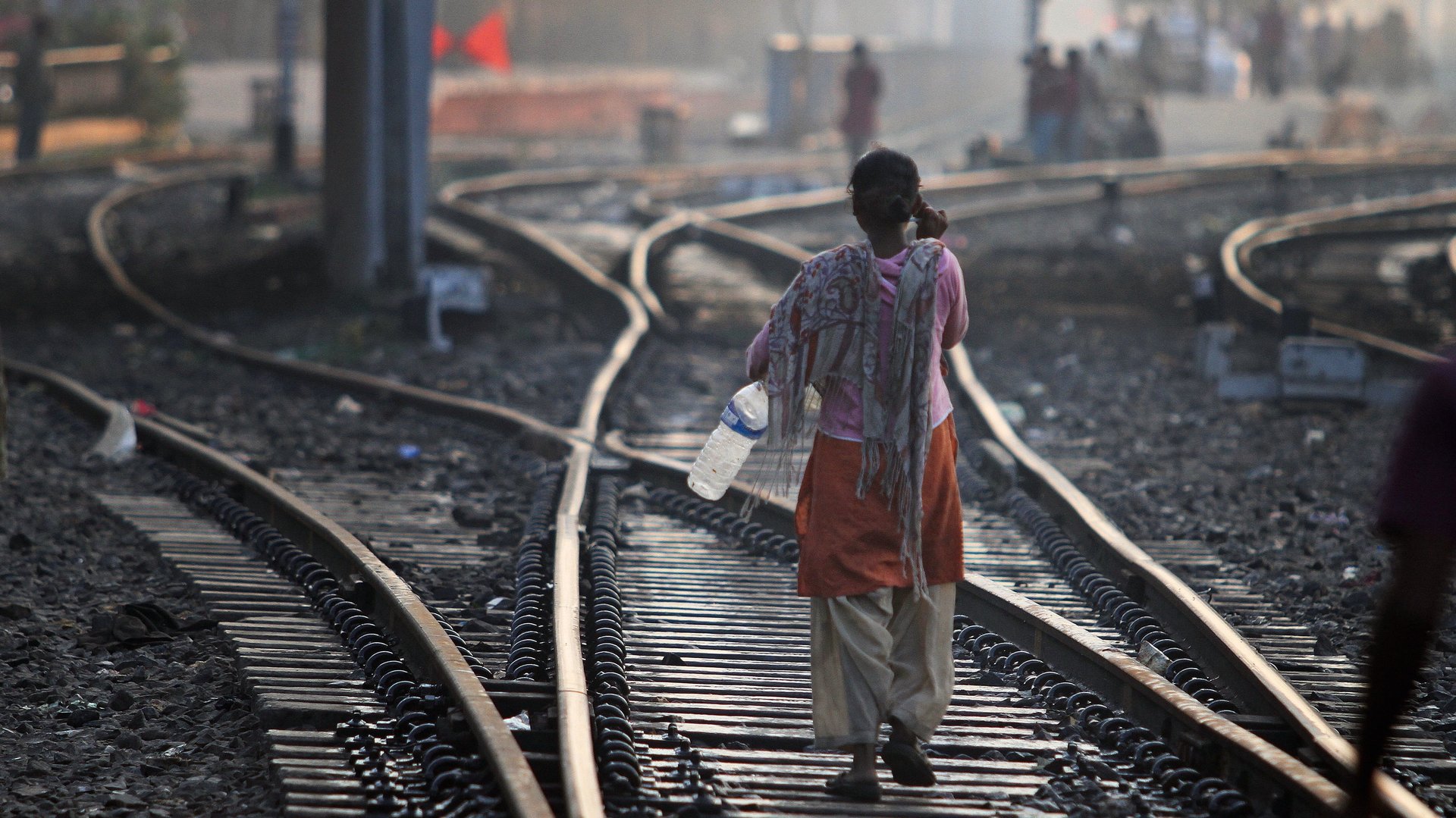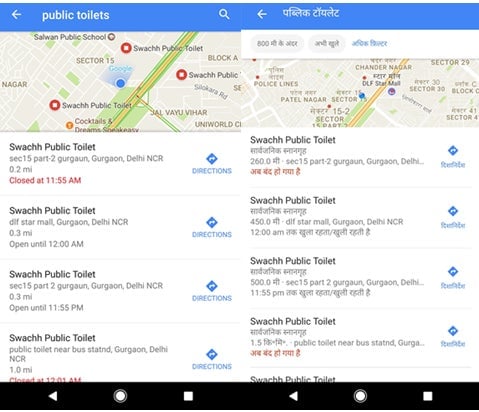Google built a tool to help Indians find nearby toilets
The Indian government reportedly built nearly 11 million toilets across the country between 2015 and 2016. But what good are they if no one knows where to find them?


The Indian government reportedly built nearly 11 million toilets across the country between 2015 and 2016. But what good are they if no one knows where to find them?
Google and the Ministry of Urban Development, the authority for housing and urban development-related issues, have forged a partnership to guide people to their nearest public restroom. “Google is adding the location, address and opening hours of over four thousand communal and public restrooms to Maps, aiming to provide easy access to information to people in India and help improve sanitation,” the company announced on Dec. 22.
When you search for “public toilet” on Google Maps, information about public restrooms in the area will appear. Google will tell you what sort of toilet seat the restroom has (eastern “squat” toilets or western “pot” ones), and whether it is free to use or paid. The service understands both English and Hindi keywords.

Currently, the search giant is mapping facilities in India’s National Capital Region—covering New Delhi, Ghaziabad, Gurugram, Noida, Faridabad—and Bhopal and Indore in the central Indian state of Madhya Pradesh. Locals and tourists can find the information on Google’s mobile app as well as its desktop site.
Sanitation networks in heartland India are subpar, with 71.5% of the rural population not having adequate access to sanitation facilities, according to the World Bank. Cities—like the ones Google is providing information for—are also in dire straits: Over 157 million urban dwellers in India do not have access to toilets and more than 41 million people residing in urban areas practice open defecation—the largest numbers in the world for both crises, as per a 2016 report by international charity WaterAid.
The government’s Swachh Bharat (Clean India) campaign is falling short of its promises. Only 24% of the 2.5 million household toilets and 28% of the 100,000 public toilets for urban areas were constructed by the slated completion date of March 2016. And in rural areas where toilets have been built, cultural resistance from those who believe defecating outdoors is the status quo is keeping latrines out of use.
It would be naive to think Google’s efforts will change attitudes and rectify India’s sanitation troubles altogether, especially since nearly 900 million Indians don’t have access to the internet, which is necessary to view the map. But for those who want and are able to reach a nearby toilet, the maps could prove to be a real asset. And when more of India builds and uses public restrooms, the tools to find them will already be in place.